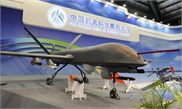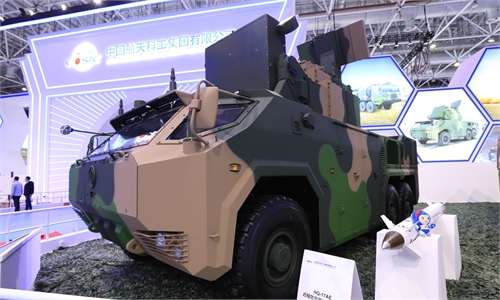Caihong UAVs make changes to serve more missions in modern warfare
CH-7 stealth drone improved to meet demand for information-based combat: chief engineer
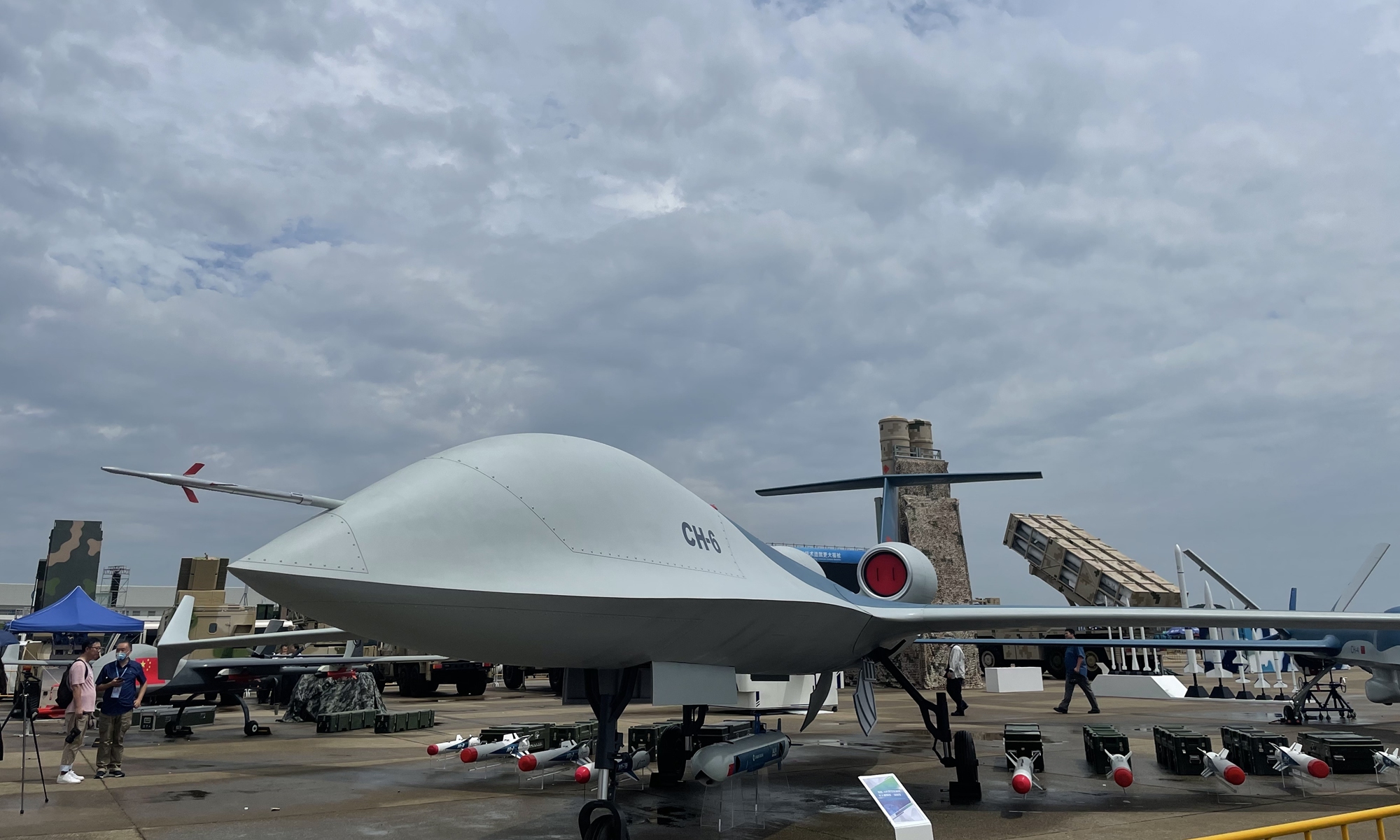
The CH UAV company displays the CH-6 drone for the first time at Airshow China 2021 in Zhuhai, South China's Guangdong Province in September. Photo: Lin Luwen/GT
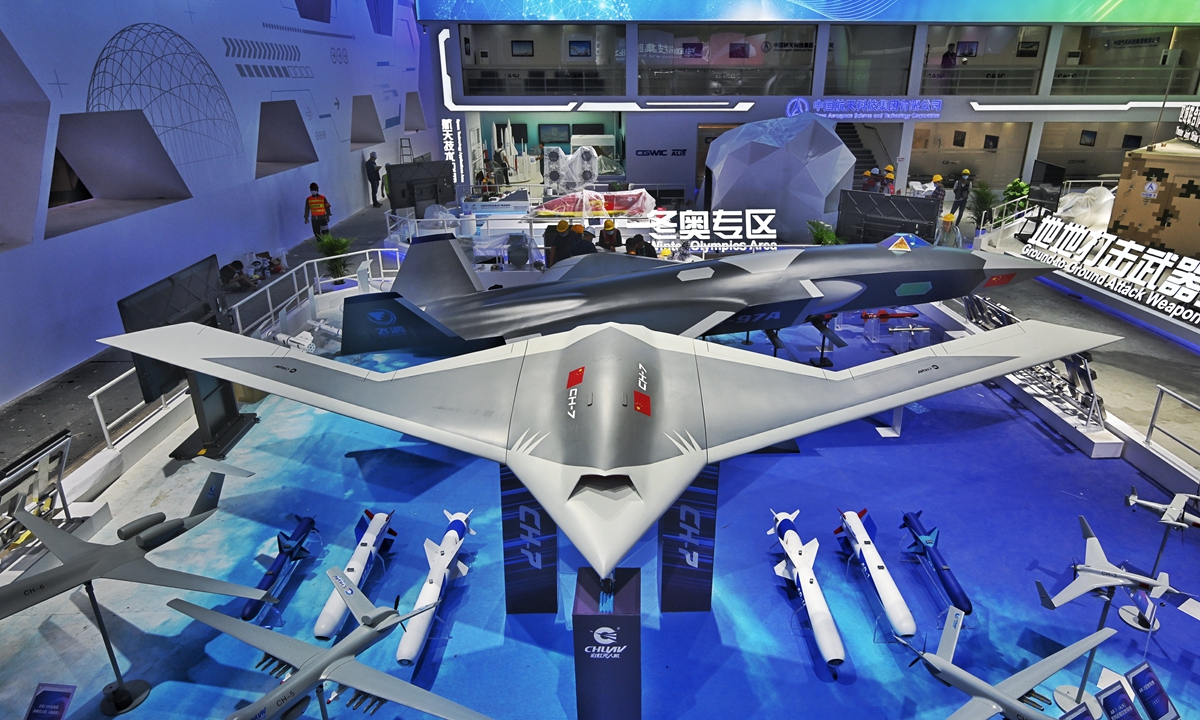
Prototypes of most CH-7 stealth UAV and other Caihong series drones, and FH-97A displayed in the exhibition hall of the Airshow China 2022. Photo: Tao Ran, courtesy of Caihong UAV of CASC
With Airshow China 2022 in Zhuhai, East China's Guangdong Province, about to start on Tuesday, exhibitors worldwide have displayed their new products in the exhibition hall, and due to the performance of military drones in ongoing military conflicts worldwide, unmanned aerial vehicles (UAV) have become a hot topic at the airshow, with Chinese manufacturers displaying multiple types of advanced drones.
Caihong UAV of China Aerospace Science and Technology Corp (CASC), an international manufacturer of the most complete UAV spectrum in China, has displayed its products including the CH-3, CH-4, CH-5 and CH-6, as well as a prototype of its most advanced CH-7 stealth UAV, which was improved based on clients' requirements and developments in modern warfare.
In the air show in 2021, the CH-7 was not displayed as it was being improved, and the chief engineer of the drone said last year that the public would see a new type of CH-7 in 2022, which would be very different from its debut in 2018.
Shi Wen, chief engineer of the CH series drone, told the Global Times at the exhibition hall on Sunday that the new CH-7 has a 26-meter wingspan, which is 4 meters longer than the original one, and a maximum takeoff weight of 10 tons. The service ceiling is 15 kilometers, while the original one was 10-13 kilometers.
"In short, the new type of CH-7 is able to fly higher and stay longer in the mission zone, to be more focused on round-the-clock reconnaissance and monitoring in highly dangerous environments, and able to keep detecting hostile targets for a longer time. It's also able to carry large missiles or guide other weapons to strike enemy targets with high values," Shi said.
It's also able to effectively shorten an enemy radar's detection range and keep containing the enemy's anti-air firepower, and greatly improve the effectiveness in information-based combat, to meet the demand for high-end UAVs in the future symmetric warfare, Shi noted.
Apart from the high-end UAV CH-7, Caihong also made improvements in its mature middle-end product CH-5, which has been exported to many countries and seen plenty of use in actual combat.
According to the official introduction, the CH-5 has a wingspan of 21 meters, a service ceiling of 8,300 meters and a maximum takeoff weight of 3.3 tons. It serves the coastal area and border regions by carrying out round-the-clock reconnaissance and monitoring, accurate positioning of targets, frontier and coast defense patrols, striking and damage effect evaluation, and strikes on time-sensitive targets.
This time, Caihong displayed a CH-5 for marine service, and Shi said this type of CH-5 was developed for missions with complicated sea conditions. According to the publicity video released by Caihong at the exhibition hall, the CH-5 for maritime mission can drop sonobuoys into the sea.
Military analysts said sonobuoys are key for searching for submarines under the sea. The US Navy has used US-made MQ-9Bs to test using UAVs for anti-submarine missions in recent years. Compared with anti-submarine aircraft like the P-8A, the drone can carry fewer sonobuoys, but it can carry out round-the-clock reconnaissance and monitoring for days, so most conventionally powered submarines will find it hard to escape detection.
The CH-5 for marine service has four pods for carrying sonobuoys, so it can also conduct similar anti-submarine missions like the MQ-9B of the US. With joint operations with anti-submarine aircraft and vessels, it could become a "submarine hunter" with advanced capability, said experts.
Apart from military uses, Caihong's UAVs are also involved in civilian services. According to the official introduction, Caihong worked with the Geology Investigation Bureau of the Ministry of Land and Resources to develop the first Caihong UAV aeromagnetic and airborne radioactive application system in China.
It completed a global first with large-scale aeromagnetic and radioactive integrated operations in Zambia. So far, the system has completed 460,000 kilometers of range in China and abroad and 300,000 kilometers of valid pipeline measuring assignments.
For public security, the Caihong UAVs are able to secure on-the-spot information in disasters, and they have participated in disaster relief after earthquake. For urban security, the drones can conduct anti-terrorism missions, reconnaissance patrols, territory security protection and other relevant missions.
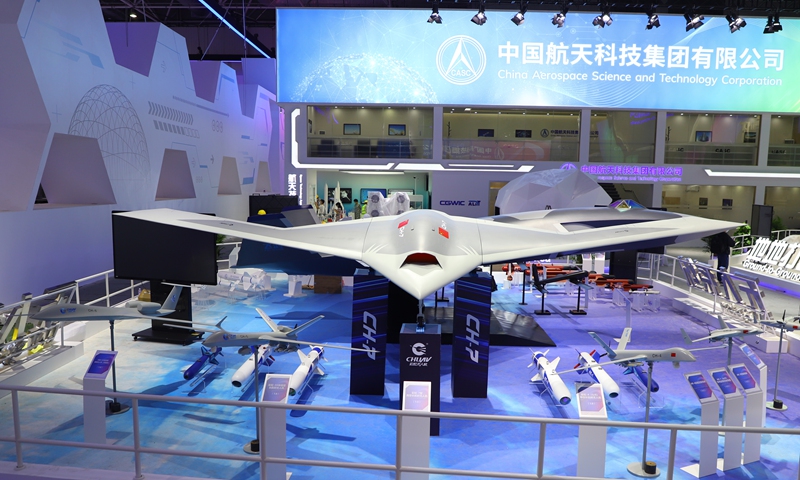
CH-7


